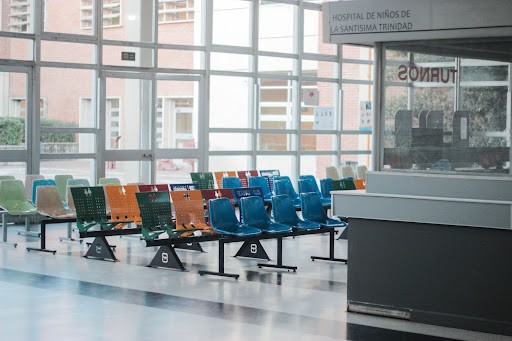Feb 11
2022
Benefits of Integrating Your Visitor Management and Access Control System For Hospitals and Clinics
 Hospitals and clinics constantly face new challenges that require time, money, and energy to figure out the best solutions. As the need for increasing the value and use cases for expanding technology in healthcare becomes more apparent, it’s time to consider the benefits of how your visitor management system works.
Hospitals and clinics constantly face new challenges that require time, money, and energy to figure out the best solutions. As the need for increasing the value and use cases for expanding technology in healthcare becomes more apparent, it’s time to consider the benefits of how your visitor management system works.
Visitor movements need to be known so that access to certain areas is appropriately restricted, but creating an efficient system for this that is also compliant with care laws can be difficult.
By connecting patient care plans to both visitor management and the access control system, it becomes possible for these building management systems to function together in a seamless and cost-effective way.
Why Visitor Management Systems Make Sense
Technologically advanced visitor management systems have been growing in popularity over the last decade, and it’s obvious why. These systems make it easier for visitors, security teams, hospital management, and hospital staff. Everyone involved feels more safe, secure, and welcome whenever a visitor management system is in place.
While traditional access systems worked well for clinics and hospitals for many years, there is no doubt that modern access control technology works much more effectively. Repetitive staff-run tasks are automated and simplified; visitors don’t have as long wait times as usual; the entire site is safer.
Centralization of access control with visitor management reduces delays, errors, and wasted resources while also allowing for consistent review and improvement.
Wellness Attestations: Verifying and Greeting Visitors
Many hospitals and clinics implement wellness attestation forms for visiting specific parts of the hospital or during specific periods. These forms assert that a visitor is in good health before they are given access to the clinic.
These forms can take a few minutes to fill out in person, and the manual check-in process is a time-sink and frustrating process for many. By automating these visitor wellness attestation forms within the larger access control and visitor management system, however, this time can be reduced to under 30 seconds.
For example, the visitor management system can be set up to allow pre-registration. When the visitor arrives at the hospital, the visitor can simply scan their ID to receive access. This integrated program saves time and improves satisfaction, and is a key way in which you might want to know how visitor management system works. Keep reading to find out more.
Centralized Solutions: Streamlining Guest Management
Streamlining guest management onto one platform that incorporates necessary access control features is a big time saver. Access control measures should be linked up with identification and registration for the best healthcare security.
Integrating these systems creates the ultimate safety and access control features. Through integration with electronic health records, physical access control, and other management systems, each site has more powerful data that can be analyzed for future improvements as well.
The goal in improving these systems is to make the visitor management process as streamlined, safe, and sensitive as possible without compromising building security. Customizable centralization is key for hospitals and clinics that are ready to improve their real-time technology solutions for visitor management today.
Access Control: Keeping Areas Secure
The hospital or clinic staff should be able to focus on patient care and their primary tasks without focusing on access control. Integrating visitor management software with the access control system ensures that guests access the areas they are permitted to and nowhere else.
The visitor management system can be automated to keep an up-to-date database of visitors, their access codes, and more. By setting up this system, you can determine where and how to manage visitor access to restricted or sensitive regions of the site.
For example, let’s say that you want family visiting patients to be able to access the unit where they are housed during a specific time period each day. First, staff care coordinators can enter the desired permissions. Then, the visitors can be automatically issued badges through the same system. Finally, the integrated access control system will allow these badges to allow the visitors to enter and exit as needed during the assigned period. These integrations save time, reduce staff intervention, and secure control of the site.
Systems with advanced integration can automatically deactivate badges as needed, making it easier to manage visitors, vendors, and others that need physical access to the site at varying times. Security is streamlined without becoming compromised.
Securing Hospitals and Clinics
As you can see, balancing physical security measures with access control systems and visitor management has many use cases and benefits. This type of centralized integration makes every site run more effectively, which is more important than ever in today’s world.
It’s time to reduce staff burden and improve building security by integrating this type into each site as soon as possible. Streamlined solutions to visitor management issues can often be found through integration with larger building management systems. What are you waiting for? It’s time to see if any of these solutions will improve your clinic or hospital’s day-to-day work.